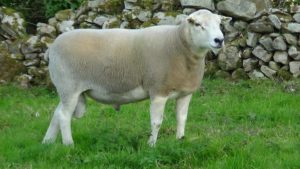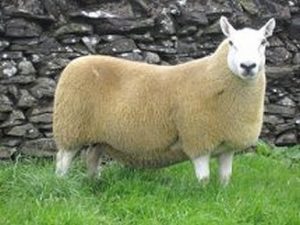Buying A Ram To Breed Female Replacements
23 August 2017 Whilst not forgetting the importance of slaughter characteristics, here are ten things to remember when selecting a maternal sire.
Whilst not forgetting the importance of slaughter characteristics, here are ten things to remember when selecting a maternal sire.
- Start by considering your flock breeding objectives. Think about the traits you wish to see expressed by both the ewe and the slaughter lamb. Which traits will have the biggest impact on profitability if you change them and what are the consequences for other traits?
- Focus on the Maternal Ability (kg) EBV to enhance milk production and the maternal care needed in female replacements.
- To increase the number of lambs reared select rams with superior EBVs for Litter Size Born and/or Litter Size Reared. The Lleyn breed now has an EBV for Lamb Survival too – helping to reduce lamb losses.
- Buy from flocks that record ewe mature size. Enhancing carcase traits by selecting for rams with high Scan Weight EBVs will increase ewe mature size but can reduce flock efficiency. Monitor ewe mature size and consider selecting against high mature size using the Mature Size EBV.
- The Lleyn breed now has EBVs for Longevity and Age at First Lambing. These low heritability traits can have high economic value and are worth considering where the information is available.
 Some maternal breeds, such as the Lleyn, Exlana and Romney have EBVs for Faecal Egg Count (both Nematodirus and Strongyles). Selecting for low/negative values can reduce lamb egg counts and reduce the post lambing rise in worm challenge seen in ewes.
Some maternal breeds, such as the Lleyn, Exlana and Romney have EBVs for Faecal Egg Count (both Nematodirus and Strongyles). Selecting for low/negative values can reduce lamb egg counts and reduce the post lambing rise in worm challenge seen in ewes.- EBVs can’t be compared between breeds, but are designed to be compared between flocks of the same breed. However, ram buyers should be aware that genetic linkage between flocks tends to be less within maternal breeds and this can sometimes limit the ability to compare performance.
- If you are interested in carcase traits find a flock that ultrasound scans big numbers of lambs – not all maternal flocks scan.
- Accuracy values are even more important when buying a maternal sire, as it takes two generations to assess a ram’s daughter’s performance. Where a ram is being selected for Maternal Ability and Litter Size, try and seek those with several generations of recorded ancestors and high accuracy values.
- Know what index your breed is using. The index weightings within the new Lleyn index are very different to those used by the Romney, Dorset or Cheviot breeds.
Sign up to the FAS newsletter
Receive updates on news, events and publications from Scotland’s Farm Advisory Service

